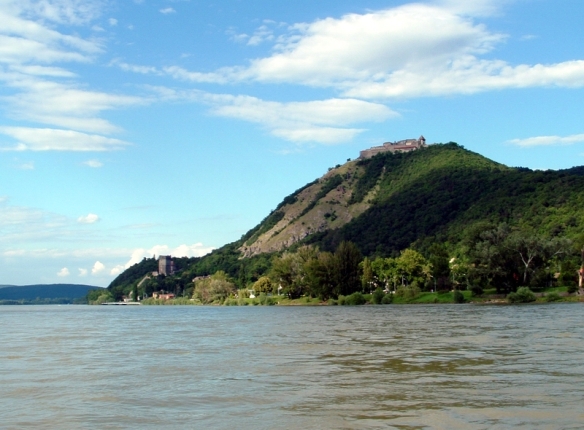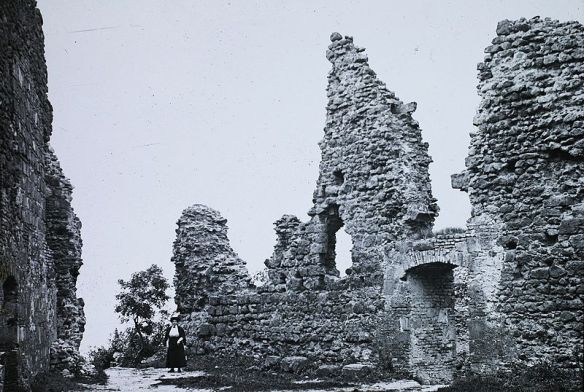Budapest can rightfully be called a city of statues. No matter where one goes there seems to be a statue or sculpture occupying a prominent place on a street corner, sidewalk or public square. Green spaces in the Belvaros (inner city) are as much a breeding ground for statuary as they are for green grass. Show a Hungarian official an open space in a public area of the city and they are quite likely to say, “This is a good place for a statue.” Show them an area of national importance, such as the grounds of parliament, then they are likely to say, “this is a good place for several statues as well as sculptures.” Past heroes are not hard to find in Budapest.

Lightness & Levity – The Little Princess in Budapest (Credit: misibacsi)
An Ideological About Face – Lightening Up
Events as well as people are commemorated, including rather obscure ones that did not turn out the way Hungarians might have hoped. The one that immediately comes to mind is the lion sculpture in Buda on the south side of Margaret Bridge. It commemorates the Siege of Przemysl during World War One in which Hungarian forces played a prominent and ultimately futile role. The overwhelming majority of the statues are quite serious in subject matter, style and tone. They usually commemorate politicians, military figures and cultural icons who left their mark on Hungarian history. Two statues stand out in my mind for bucking this trend. They are uniquely light hearted, adding a bit of levity to the pervasive intensity of Hungary’s most famous figures immortalized in stone. Neither of these statues commemorates a specific person which makes them that much more memorable.
When the Iron Curtain collapsed in 1989, Hungary was a nation in serious need of some light heartedness. While many Hungarians were elated with their newfound freedom, the economic legacy of communism meant the country was in for a tumultuous ride on the road to capitalism. Part of the transition from communism to democracy was cultural, which meant statues of apparatchik icons were out. In many cases these were to be replaced by statues which had been hidden away for decades and re-imposed in public spaces. An ideological switcheroo was soon underway. The end of communism in Hungary also meant that statues exuding a less serious side could now be more prominently seen in public, one of the first of those to appear would become rightfully famous.

Catching A Ride – The Little Princess & Tram 2 in Budapest (Credit: Mister No)
Model Arrangement – A Fairy Tale Come True
In 1972 the sculptor Laszlo Marton had an idea for a statue that would be unlike anything seen in Budapest at that time. There would be no grim looking bureaucrats or militaristic theme, no idealized workers marching toward a nonexistent utopian paradise. Instead Marton would portray childlike frivolity and playfulness with “The Little Princess” (Kiskirálylány in Hungarian). The model for this statue was Marton’s five-year old daughter Evike, who often dressed as a princess while on the playground in Buda. Her outfit was homemade, including a crown made of newsprint. This inspired Marton to use Evike as a model in the family’s back garden for “The Little Princess”. The statue portrays a child wearing a robe and pointy crown. In 1990, the statue was placed atop an iron railing. The Little Princess sits on the rail relaxing, looking like the very definition of cool just a stone’s throw from the Danube. The tracks for tram line #2 run just past the statue. Across the Danube, Buda Castle rises above the city.
The Little Princess has her back turned on this dramatic scene with not a care in the world. The statue’s novelty is also part of its power. Rather than gravitas, the Little Princess portrays levity. This is the last thing a visitor would expect to see in one the most stunning settings the city has to offer. It seems entirely fitting. The Little Princess acts as a counterpoint to the usual expressions of seriousness portrayed by so many other statues in Budapest. The princess’s look of serene happiness coupled with a willful nonchalance to her surroundings makes the statue positively delightful. Perhaps She seems to be communicating a message to passersby, enjoy the moment as well as the city. The Little Princess quixotic presence has made her more than a statue, she has also become a symbol of Budapest, a city that can sometimes seem like a fairy tale.

An Old Friend – The Fat Policeman in Budapest
The Golden Belly – For Luck & Levity
The Little Princess is not the only statue that showcases the lighter side of Budapest. Within sight of the neo-classical splendor of St. Stephen’s Basilica, stands a statue known as The Fat Policeman. He jovially guards the intersection of Oktober 6 and Zrinyi Miklos utcas (streets) with his plump, protruding belly polished to a golden bronze. His golden belly is the product of tourists hoping to glean a bit of good luck by giving The Fat Policeman a lucky tummy rub. The policeman is all but impossible to miss for those strolling up and down the street. Throngs of tourists often crowd around the statue to get their photos taken with everyone’s favorite Budapestian policeman. The Fat Policeman is warm and friendly, with his upturned mustache and peaked cap he looks the opposite of a stereotypical cop. The sculptor of the statue, Andras Illyes, is said to have modeled it after his grandfather who must have had a very pleasant demeanor by the looks of his look-a-like. The statue was installed in 2008. Since that time, it has become a must see, as well as a must rub.
The Little Princess and The Fat Policeman are memorable precisely because they are so unlike most statues in Budapest. In a city where it seems like almost any statue is fraught with meaning, both political and personal, it is nice to see a few that reflect a more pleasant side to the city’s persona. While the statues do not pay homage to any specific historical figures, nor do they express an ideological point of view, their most revolutionary aspect is happiness. Maybe that is why they are viewed with such fondness. They remind visitors that for all its grandeur and glitz, Budapest is also the kind of place where a princess and policeman prove that above all else, levity reigns supreme.



























